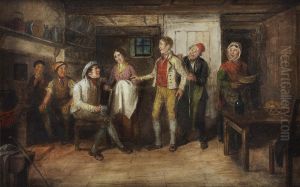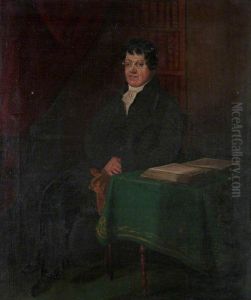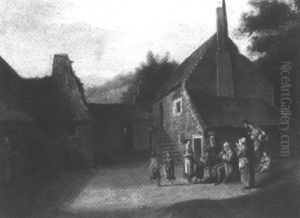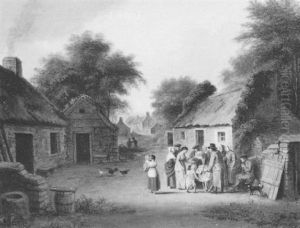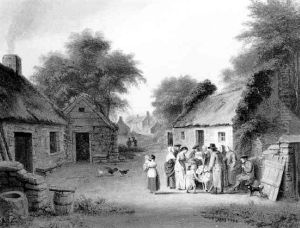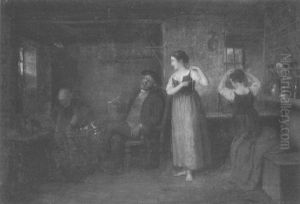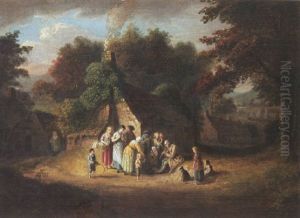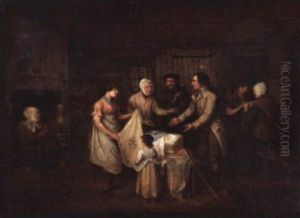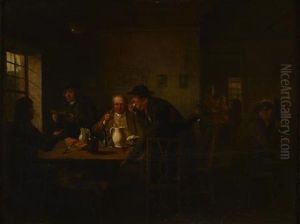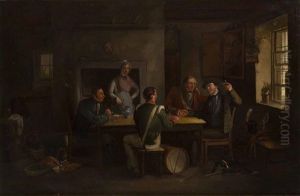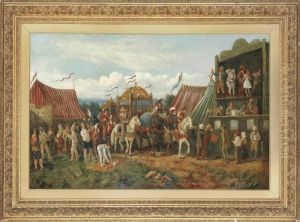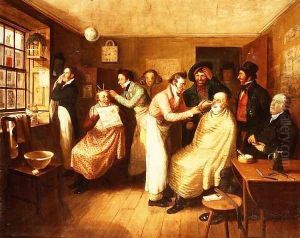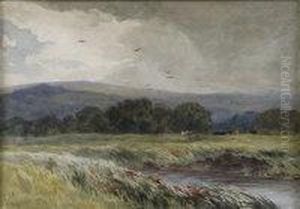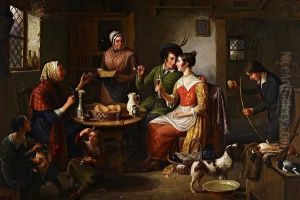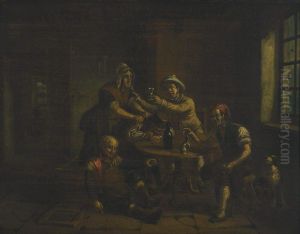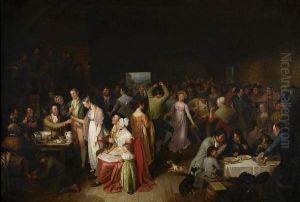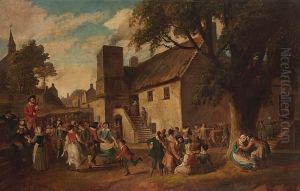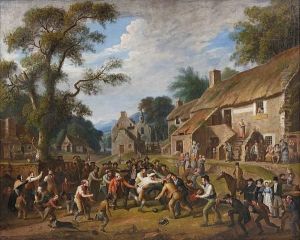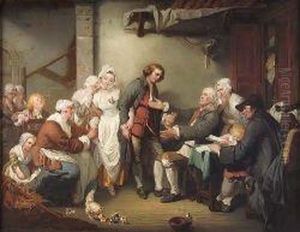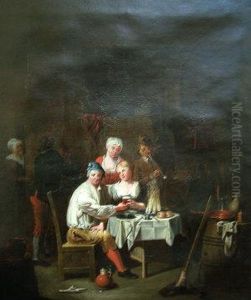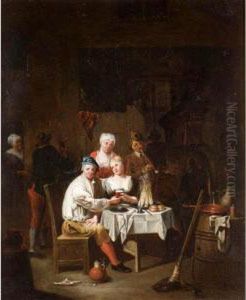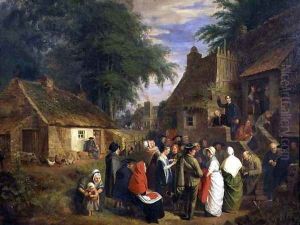Alexander Carse Paintings
Alexander Carse, a Scottish painter active during the late 18th and early 19th centuries, is best remembered for his genre paintings depicting scenes of everyday life in Scotland. Born around 1770 in the Scottish Borders region, details of his early life and training are somewhat obscure, but he is believed to have been largely self-taught. Carse's work provides a valuable visual record of social customs, dress, and festivities of his time, often with a particular focus on the lower classes and rural life.
His paintings are characterized by their detailed depiction of figures and lively scenes, often imbued with a sense of narrative or humor. Carse exhibited at the Royal Scottish Academy and the Royal Academy in London, gaining recognition in his time for his contributions to genre painting. Although not as widely known today as some of his contemporaries, his work offers insightful commentary on the social dynamics and cultural practices of Scotland during the transition from the 18th to the 19th century.
After achieving success as an artist, Carse's later life is marked by a decline in his public presence and output. The reasons for this decline remain a matter of speculation among art historians, with possible explanations including changing tastes in art and personal or health problems. He passed away in 1843, leaving behind a body of work that, while not extensive, is highly valued for its historical and cultural significance. His paintings are held in various public and private collections, serving as an enduring legacy of Scotland's artistic heritage in the Georgian period. Carse's contribution to Scottish art lies not only in his depiction of everyday life but also in his ability to capture the spirit and transformation of his nation during a pivotal era.
